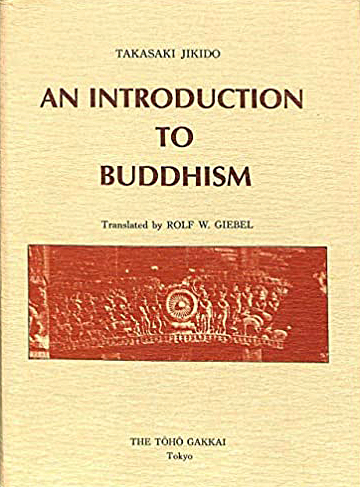No edit summary |
No edit summary |
||
| Line 29: | Line 29: | ||
**{{i|The Theory of Three Bodies|68}} | **{{i|The Theory of Three Bodies|68}} | ||
III. Dharma: The Buddhist Conception of Truth | *{{i|III. Dharma: The Buddhist Conception of Truth|70}} | ||
The Meanings of Dharma | **{{i|The Meanings of ''Dharma''|70}} | ||
**{{i|The Basis of the Teaching: Dependent Co-arising and the Four Noble Truths|76}} | |||
**{{i|Śākyamuni's: Philosophical Position: The Ten or Fourteen Unanswerables|85}} | |||
**{{i|"Dharma-seals": The Watchwords of Buddhism|89}} | |||
**{{i|''Saṃskāra'' and ''Dharma'': The Dependently Co-arisen|96}} | |||
**{{i|''Dharmatā'': The Principle of Dependent Co-arising|100}} | |||
**{{i|The Conception· of Truth in Mahāyāna Buddhism|104}} | |||
**{{i|Supreme Truth and Conventional Truth|105}} | |||
The | *{{i|IV. ''Sarva-dharmāh'': The Constituent Elements of Existence|107}} | ||
**{{i|The Classification of the Constituent Elements of Existence in the Early Canon: The Five Aggregates, Twelve Sense-Fields, and Eighteen Realms|107}} | |||
**{{i|The Sarvāstivādin Classification of the Constituent Elements of Existence: The Five Categories and Seventy-five Elements|114}} | |||
**{{i|The Sarvāstivādin Theory of the Elements: The Elements Exist Eternally|120}} | |||
**{{i|The Mahāyānist Conception of the Elements: All is Empty|126}} | |||
The | |||
*{{i|V. Transmigration, Karma, and Mental Defilements|128}} | |||
The | **{{i|Transmigratory Existence: The Three Realms and Six Paths|128}} | ||
**{{i|Karma|137}} | |||
**{{i|Mental Defilements|141}} | |||
**{{i|The Twelvefold Chain of Dependent Co-arising|149}} | |||
*{{i|VI. The Path to Enlightenment|163}} | |||
**{{i|Nirvāṇa and Enlightenment|163}} | |||
**{{i|The Mahāyānist Conception of Nirvāṇa|168}} | |||
**{{i|The Path to Enlightenment|170}} | |||
**{{i|The Noble Eightfold Path|172}} | |||
**{{i|The Three Disciplines: Morality, Meditation, and Wisdom|174}} | |||
**{{i|Faith and Practice|188}} | |||
**{{i|Practices for· the Welfare of Others|191}} | |||
**{{i|The Practices of the Bodhisattva: The Six Perfections|193}} | |||
VI. The Path to Enlightenment | |||
The | |||
The Path to Enlightenment | |||
The Noble Eightfold Path | |||
The Three Disciplines: | |||
Faith and Practice | |||
Practices for· the Welfare of Others | |||
VII. Mind: The Agency of Practice .. , .... :······ .. ···········198 | VII. Mind: The Agency of Practice .. , .... :······ .. ···········198 | ||
Revision as of 18:47, 2 July 2020
This book is based upon notes prepared by the author for general lectures on Buddhism which he has been giving to students at a number of universities in Tokyo since around 1960. The initial version of the present work first saw the light of day as part of a textbook for university students entitled Bukkyo ippan 仏教一般 (Buddhism in General) which was compiled in concert with professors specializing in Chinese and Japanese Buddhism and published by the Department of Buddhist Studies at Komazawa University in Tokyo. Then, at a later date, the author was approached by the Tokyo Daigaku Shuppankai (University of Tokyo Press) to write an introductory work on Buddhism for the edification of the general reading public. By permission of the Department of Buddhist Studies at Komazawa University, he accordingly extracted those sections of the above textbook which he had himself written ("Outline of Buddhism" and "Indian Buddhism"), to which he then made some additions and corrections and also appended a brief history of Buddhism covering not only India but also China and Japan. This was then published in 1983 under the title of Bukkyo nyümon 仏教入門 (An Introduction to Buddhism), of which the present work is an English translation. (Takasaki, preface to the English version, iii)
| Citation | Takasaki, Jikidō. An Introduction to Buddhism. Translated by Rolf W. Giebel. Tokyo: Tōhō Gakkai, 1987. |
|---|---|

